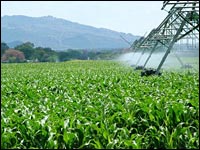Articles by Tom Philpott
Tom Philpott was previously Grist's food writer. He now writes for Mother Jones.
All Articles
-
Once the global capital of bad food, London shows the way forward.
Since I started writing for Gristmill, I've tried to make the point that our food system amounts to an ongoing environmental disaster, and deserves much more attention from greens.
Over in London, Mayor Ken Livingstone is putting that idea into action. As the Guardian reports, Livingstone recently declared that "The energy and emissions involved in producing food account for 22% of the UK's greenhouse gas emissions."
Ponder that number for a minute. Rather than obsess about hybrids and switchgrass and CAFE standards -- worthy topics, to be sure -- it might make sense to push for policies that make food production more eco-friendly. And Livingstone is doing just that.
"I want London to set a standard for other cities around the world to follow in reducing its own contribution to climate change. How we deal with food will play an important role in this," he told the Guardian.
(Thanks to the Organic Consumers Association for bringing this story, which came out way back on Jan. 7, to my attention.)
-
In the heartland of industrial agriculture, a county goes local and organic

Nestled in the heartland of globally oriented commodity-food production, Woodbury County in Iowa has made a bold move away from industrial agriculture.
Last summer, the Kellogg Foundation's Food and Society (FAS) website reports, "the County passed an 'Organics Conversion Policy,' offering up to $50,000 annually in property tax rebates for those who convert from conventional to organic farming practices."
And then in January 2006, FAS continues, the county ...
... became the first in the United States to mandate the purchase of locally grown, organic food. The "Local Food Purchase Policy" requires Woodbury County departments to purchase locally grown, organic food from within a 100 mile radius for regular city use. The policy has the potential to shift $281,000 in annual food purchases to a local farmer-operated cooperative, increasing local demand and spurring increased production and processing.
Why would a county in Iowa, of all places, implement what amounts to a rejection of industrial agriculture?
-
How the feds make bad-for-you food cheaper than healthful fare
If you’re going to talk about poverty, food, and the environment in the United States, you might as well start in the Corn Belt. So good, and so good for you — until it’s turned into soda. Photo: stock.xchng. This fertile area produces most of the country’s annual corn harvest of more than 10 billion […]
-
Why the heavily subsidized corn harvest amounts to an annual environmental calamity
While researching my Poverty & the Environment piece on the food system, I had occasion to look closely at the corn harvest, source of so much of our cheap food.
As bad as the annual flood of cheap corn is for our health -- nutritionally worthless high-fructose corn syrup, cheap feed for confined animals pumped full of antibiotics and hormones -- it may be even worse for the environment.
